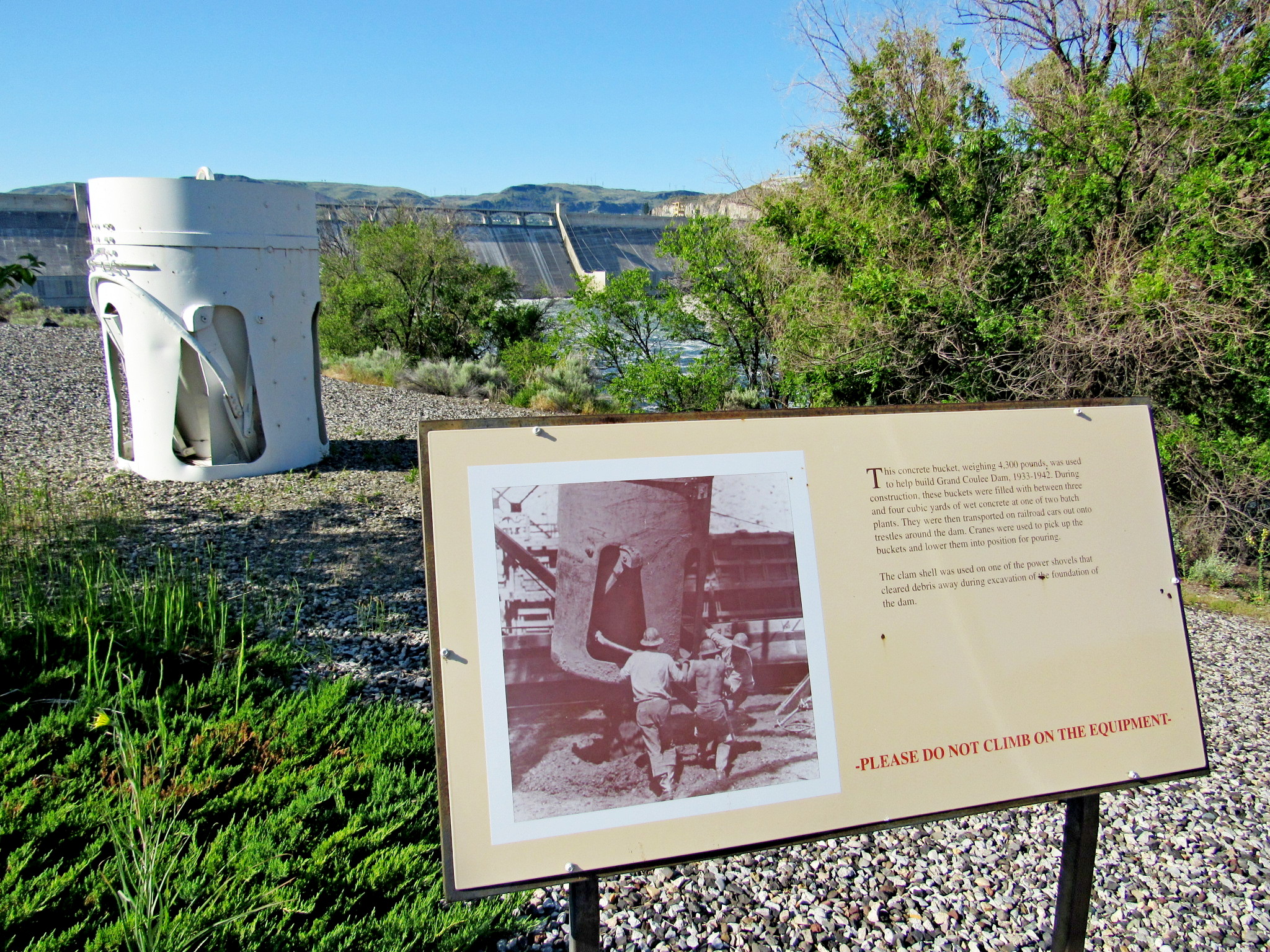
Concrete Bucket - Coulee Dam, WA
Posted by:  T0SHEA
T0SHEA
N 47° 57.925 W 118° 58.799
11T E 352206 N 5314352
Just south of Roosevelt way, at the east end of the Coulee Dam bridge, is this concrete bucket which helped to build Coulee Dam.
Waymark Code: WMYCR0
Location: Washington, United States
Date Posted: 05/30/2018
Views: 1
Undoubtedly the largest single project of the Public Works Administration, construction of the Grand Coulee Dam began in 1933, not being completed until 1941, just in time to provide power for wartime industry of the Pacific Northwest. $63 million was allocated for the initial phase of construction, with the final cost coming to $163 million in 1943 dollars. However, repairs due to design flaws and to finish the power stations through the '40s and '50s added another $107 million, bringing the total cost to $270 million. The later addition of the Third Powerplant from 1967 to 1974 added another $460 million, bringing the final cost in 1973 to $730 million. Construction of the dam also cost the lives of 77 of the thousands of workmen employed on the project, with an additional four men killed during the construction of the Third Power Plant and Forebay Dam from 1967 to 1975.
Grand Coulee Dam remains the largest dam in the United States and one of the largest in the world. Initially conceived to provide irrigation, the dam quickly came to be seen as a three fold resource, providing not only water to irrigate more than 671,000 acres, but also providing flood control of the Columbia River and producing 21 billion kilowatt hours of electricity annually. With a generating capacity of 6,809 megawatts, far and away the most of any hydro facility in the country, the dam produces electricity for all or parts of eleven states.
This concrete buck may be the only one of possibly dozens which has survived to tell its story. Its story, from a nearby sign, is:
This concrete bucket, weighing 4,300 pounds, was used to help build Grand Coulee Dam, 1933-1942. During construction, these buckets were filled with between three and four cubic yards of wet concrete at one of two batch plants. They were then transported on railroad cars out onto trestles around the dam. Cranes were used to pick up the buckets and lower them into position for pouring.
The clam shell was used on one of the power shovels that cleared debris away during excavation of the foundation of the dam.
The bucket is at one of several close in viewpoints for the dam, across the Columbia from the visitor centre.
